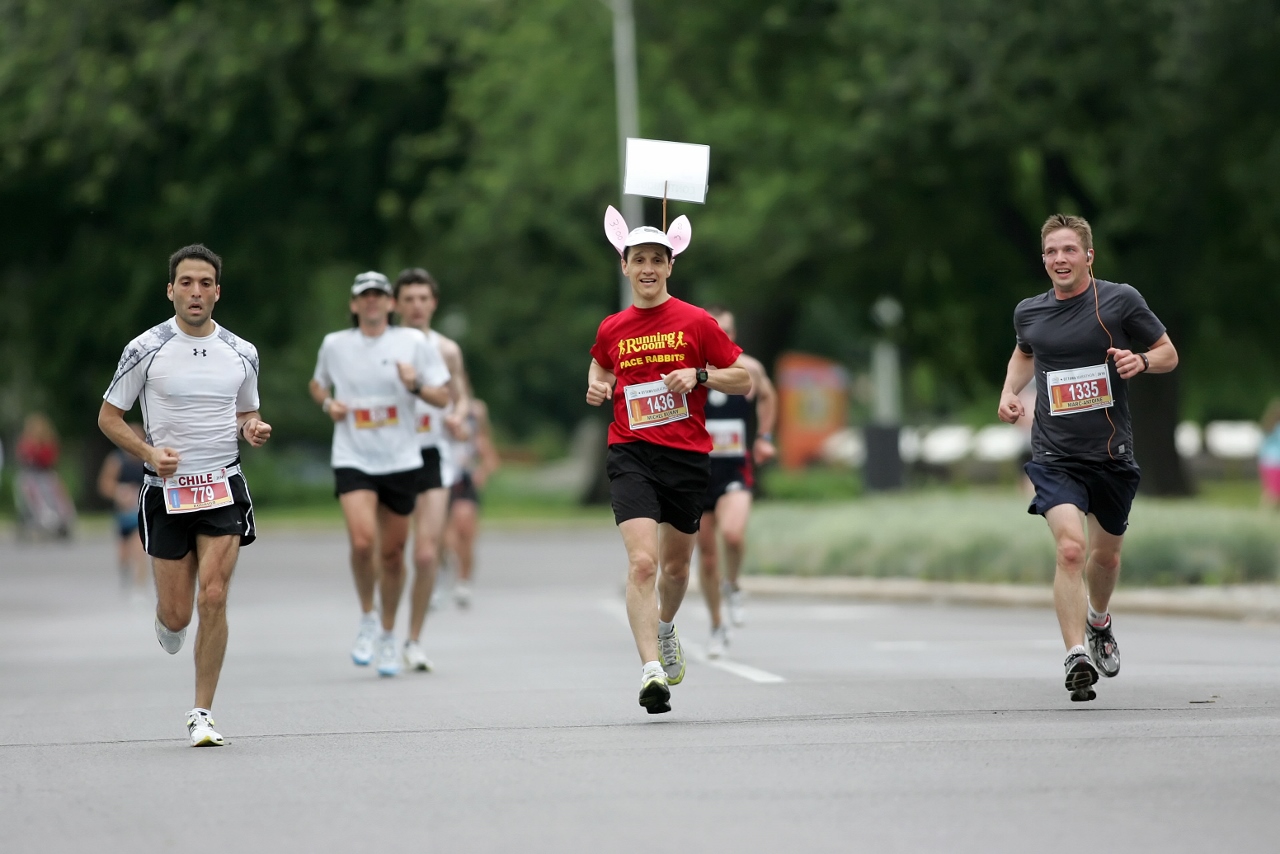Marathon pacing 101: How the heck to actually run a marathon
We break down three common strategies for pacing in the marathon and provide tips to help you decide which strategy might be the best for you


How to train for a marathon is one thing (and FYI, is a pretty important detail) but actually running it–marathon pacing that is–is quite another. So how should you approach the important aspect of choosing how to run the race?
RELATED: Marathon Training 101: What matters most for 42.2K success?
Once you’ve got into the groove of marathon training and as race day nears, you’ll want to decide, or at least consider, a goal time for the race. With this time in mind, you should start devising a race plan on how to execute in order to achieve it. Proper marathon pacing is vital to ensuring a successful experience and can make or break achieving your goal time.
Research on the subject of marathon pacing, often performed by exercise physiologists, has found that the optimal way to achieve your marathon goal time is to run a relatively even pace throughout the marathon. In fact, if you look at the current marathon world records for both men and women, both Dennis Kimetto (2:02:57) and Paula Radcliffe (2:15:25) ran slightly faster during the second half of their respective races than the first half (also referred to as a “negative split” in running terminology).
Most runners, from beginner to elite, will produce their best performance when they run an evenly split race, or one where they are able to finish just slightly quicker in the second half than in the first. Having said this, there are always exceptions to the rule. Let’s discuss the relative pros and cons of three unique pacing strategies that are commonly used in the marathon.
Running even splits
This strategy is self-explanatory: it’s when you run at an even speed/pace from start to finish and therefore run the first half of the race in the same time as you run the second (i.e. an even split). If you choose to go with this tactic, make sure you know your goal pace going into race day and be willing to stick to it right from the gun. If there happens to be a pace bunny going at your goal pace, it would be a smart idea to just stick with the pack.
If you’re not using a GPS and utilizing the lap/split button at every kilometre (and even if you are), it also helps to know what your cumulative time should be at major points such as 10K, halfway/21.1K, 30K, etc. Some races have clocks at these key points so can be useful gauges to monitor your progress.
Having patience and discipline with your pacing is key. Remember that the pace will feel very easy at the start, and may still feel easy at halfway, but this does not mean that you should pick up the pace. As you get further into the race and start to fatigue, your perceived effort will increase, so you will have to work progressively harder to maintain the same pace. One of the biggest mistakes people make is to start picking up the pace too early in the race. This can often lead to slowing down in the latter stages of the race.
The negative split
With this strategy, you attempt to run the second half of the race slightly faster than the first. As opposed to running even splits, the runner looking to finish in four hours would run the first half in 2:01 or 2:02 and then try and run the second half slightly faster, in 1:58 or 1:59. This approach also takes an incredible amount of discipline, as the pace should feel quite easy for the first half. That’s OK though, it’s supposed to.
Remember, it will get tough eventually, so just tell yourself that you are storing up that extra energy for your strong and fast finish. This is a great strategy for first timers or relatively new marathoners, as you will come away from your marathon feeling confident and motivated to run even faster in your next one.
The positive split
This strategy has the runner complete the first half of the marathon approximately one to three minutes faster than the second half. For example, using the goal of a four-hour marathon, the runner would run the first half in 1:58 or 1:59, and then have a cushion to slow down by approximately two to four minutes in the second half and still achieve their 4:00 goal.
Why would anyone want to run the race this way? The reason for using this strategy is to account for the physiological changes that take place when you inevitably fatigue in the marathon. The risk of running out of stored energy (namely, glycogen) plus decreased running economy will generally lead to a slower pace in the final kilometers of the marathon. Having the time cushion (sometimes called “banking” time) from the first half may be what helps you achieve your goal time even if you slow down.
This strategy is generally recommended for more experienced marathoners or those with aggressive time goals as they are particularly susceptible to things getting really tough near the end. Not that fast times can’t be achieved with this tactic, because many people have run fast using this approach. But you are taking a much bigger risk if you try this strategy since the chance of hitting the wall certainly becomes greater when you start out aggressively.
RELATED: Become bonk-proof: How to avoid hitting the wall
Other considerations
There are of course other considerations to make when choosing how to approaching pacing a marathon. The course itself will be a major one. If the course features significant hills or is known to more challenging in the first versus the second half, it may be valuable to run one half slower or faster depending on when the course is most favourable. An example of this would be banking time on the downhill section of a course which may help you run a faster time than being more conservative.
The weather conditions could also be a factor. If you are running into the wind or whether it’s at your back will also affect how fast you can run and the effort that you need to maintain your pace. Running into the wind in the second half of a race will always be harder than using it to bank some time in the first half but running a bit slower into the wind in the first half a race might allow you to have the energy to really utilize the tailwind in the second half. If temperatures are expected to rise throughout the race, going out a bit faster at the start when conditions are good may be better for your overall time than hoping to pick up the pace in the second half when it’s already too warm.
Regardless of the course and conditions, hopefully, these three pacing strategies will be helpful for you in devising your own race plan. The most important advice is to decide on a race strategy, be confident in it, and be sure to stick to the plan once the gun goes off.


